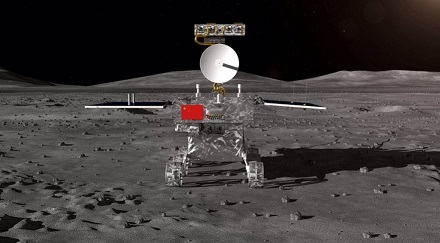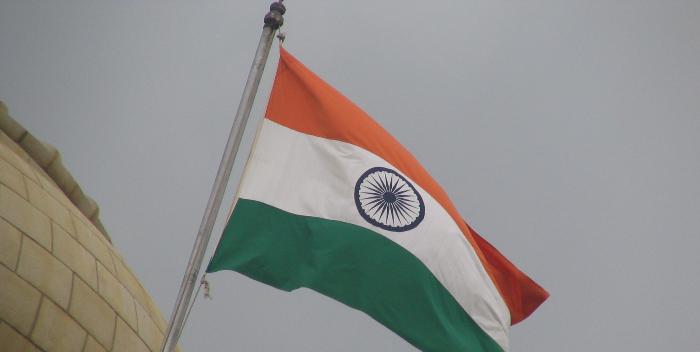
An artistic rendition of China's lunar spacecraft Chang'e-4 on Moon's surface.
BEIJING (PTI): China's Chang'e-4 probe has survived the first lunar night after its historic soft landing on the far side of the moon, waking up to colder-than-expected temperature of minus 190 degrees centigrade, the national space agency said Thursday.
The rover and the lander of the Chang'e-4 probe have been awakened by sunlight after a long "sleep" during the first extremely cold night on the moon, said the China National Space Administration (CNSA).
A lunar day equals 14 days on Earth and a lunar night is of the same length. The Chang'e-4 probe switched to dormant mode during the lunar night due to lack of solar power.
Chinese lunar rover landed on the far side of the moon on January 3, becoming the world's first to touch down on the moon's uncharted side never visible from Earth.
This is the first time Chinese scientists have received first-hand data about the temperatures on the surface of the moon during the lunar night.
The lander woke up at 8:39 pm Wednesday, and the rover Yutu-2 (Jade Rabbit-2) awoke at about 8:00 pm Tuesday, surviving their first lunar night after making the first-ever soft landing on the far side of the moon, the CNSA said.
As a result of the tidal locking effect, the moon's revolution cycle is the same as its rotation cycle, and the same side of the moon always faces the Earth.
"According to the measurements of Chang'e-4, the temperature of the shallow layer of the lunar soil on the far side of the moon is lower than the data obtained by the US Apollo mission on the near side of the moon," said Zhang He, executive director of the Chang'e-4 probe project from the China Academy of Space Technology (CAST).
"That's probably due to the difference in lunar soil composition between the two sides of the moon. We still need more careful analysis," Zhang was quoted as saying by the state-run Xinhua news agency.
Temperatures vary enormously between day and night on the moon. Previously, the Chinese scientists had no data on exactly how cold it could be.
At the end of 2013, China launched Chang'e-3, the country's first spacecraft to soft-land on the moon. The scientific instruments on its lander are still operating after more than 60 lunar nights over the past five years.
"It was a success, but Chang'e-3 was designed according to foreign temperature data," said Zhang.
The measurement of the temperature changes between the day and night on the moon will help scientists estimate the properties of the lunar soil, Zhang said.
The rover and the lander carried a radioisotope heat source, which helped keep the probe warm during the lunar night.
The lander was also equipped with an isotope thermoelectric cell and dozens of temperature data collectors to measure the temperatures on the surface of the moon during the lunar night.
Used for the first time in a Chinese spacecraft, the isotope thermoelectric generation technology to transform heat into power on Chang'e-4 is a prototype for future deep-space exploration, said Sun Zezhou, chief designer of the Chang'e-4 probe from CAST.
NASA's Curiosity rover also adopts this power technology, freeing it from the sunshine, sand and dust restrictions that have affected its predecessors Opportunity and Spirit, he explained.
"It is a technology that we must master if we want to go to the moon's polar regions or farther than Jupiter into deep space, where solar power cannot be used as the primary power source," he said.
Named after the goddess of the moon in Chinese legends, Chang'e 4 is the fourth lunar probe launched by China since the country's first lunar programme launched in 2004.
 Previous Article
Previous Article Next Article
Next Article













The Indian Air Force, in its flight trials evaluation report submitted before the Defence Ministry l..
view articleAn insight into the Medium Multi-Role Combat Aircraft competition...
view articleSky enthusiasts can now spot the International Space Station (ISS) commanded by Indian-American astr..
view article